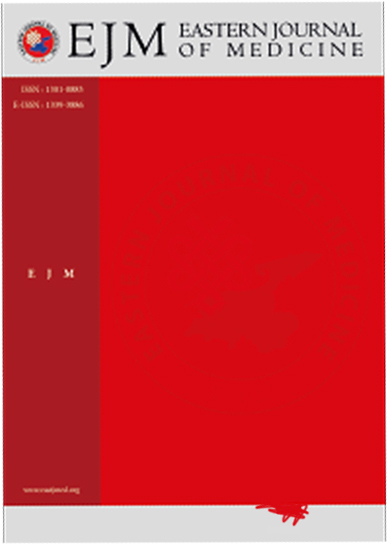Comparison of the efficacy of auditory steady-state response (ASSR) and otoacoustic emission (OAE) in neonatal hearing screening
Mehmet Zeki Erdem1, Mehmet Fatih Garça21Deparment of Otolaryngology, Yuzuncu yil University, Van, Turkey2Deparment of Otolaryngology, Private Lokman Physician Hospital, Van, Turkey
INTRODUCTION: To investigate the correlation among auditory steady-state response (ASSR) and transient evoked otoacoustic emission (TEOAE) and screening brainstem auditory evoked response (s-BAER) tests in children with sensorineural hearing loss (SNHL).
METHODS: TEOAE, multiple-ASSR, and click s-BAER recordings and analyses of 30 healthy newborns and 74 newborns with high-risk of SNHL were performed prospectively. The three techniques were compared between healthy and high-risk SNHL newborns. In addition, average test durations were calculated in minutes.
RESULTS: Hyperbilirubinemia requiring transfusion was the most common risk factor in the high-risk SNHL group. In the ASSR test, the rate of failure was higher at low frequencies and was dramatically lower at high frequencies. In both ASSR and TEOAE, the sensitivity and accuracy rates increased at high frequencies. Average test duration (including preparations) was 30.2±6.45 min for multiple-ASSR, 1.26±0.81 min for TEOAE, and 1.86±0.87 min for s-BAER.
DISCUSSION AND CONCLUSION: Multiple-ASSR was found to be more sensitive in predicting behavioral hearing status compared to TEOAE. Based on our findings, we consider that multiple-ASSR is an objective test that can be used safely in predicting rapid frequency-specific behavioral hearing of bilateral ears simultaneously without requiring practitioners interpretation, particularly in high-risk neonates. However, further evidence and studies are needed to ensure that the newborns hearing prediction alone is sufficient.
Keywords: Newborn, auditory steady state responses, otoacoustic emission
Manuscript Language: English














